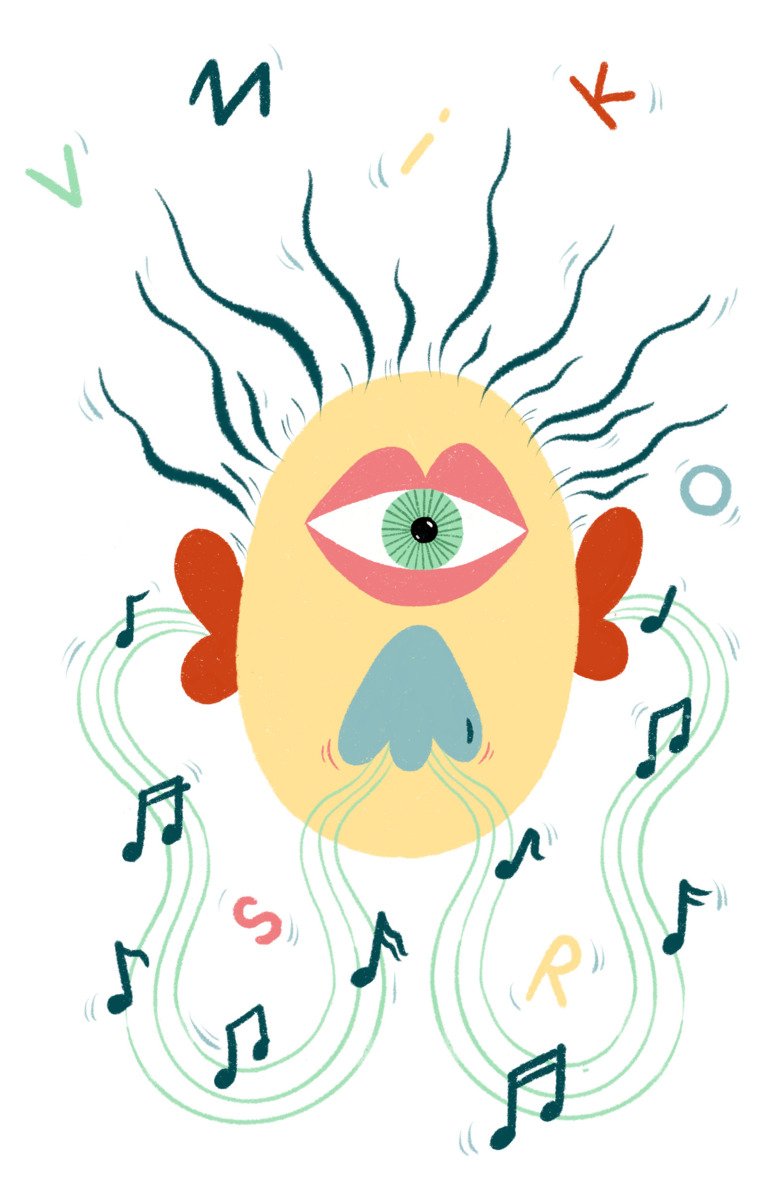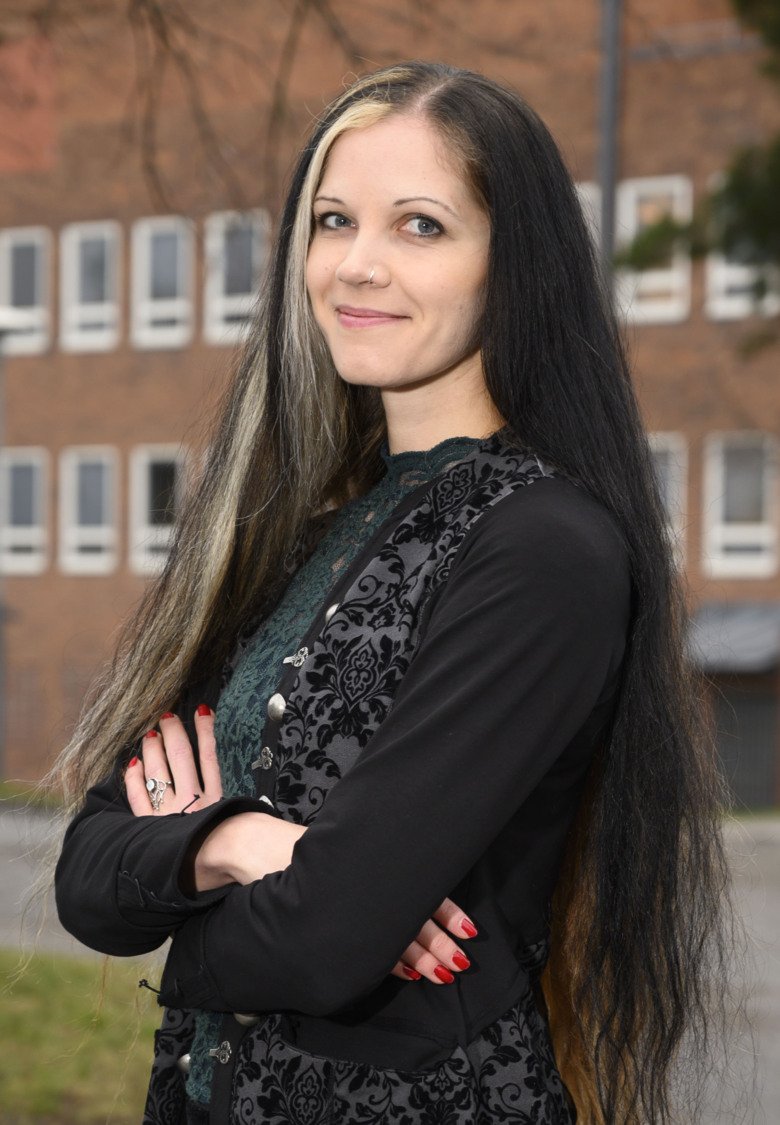Synesthesia: A colourful ability
What does the colour red sound like? Only someone with synesthesia can hear it. Now researchers are learning more about the ability to make unusual sensual connections.

Text: Ola Danielsson, first published in Swedish in the magazine Medicinsk Vetenskap no 1 2020
Some hear a trumpet and see triangles floating through the air. Another thinks about basketball and tastes waffles. A third thinks the number nine is a specific shade of pink that no one else can see.
It might sound strange. But about four per cent of the population has some form of additional experiences connected to a sensory impression or a thought, which is called synesthesia. However, people with synesthesia rarely agree on what is associated with what.
“It’s difficult to say how many forms of synesthesia there are. All manner of combinations seem possible,” says Janina Neufeld, researcher at KIND, a research centre for neuropsychiatric disabilities at Karolinska Institutet, who has been interested in synesthesia for a long time.
The most common is that numbers, letters, weekdays, or other sequential linguistic units are connected to colours. But the nature of the experience may vary.
“Some synesthetes can look at a piece of paper and see different colours that often manifest as an aura surrounding the black letters. Others describe it more as experiences playing on an inner screen,” says Janina Neufeld.
Abstract concepts made concrete
Synesthesia means simultaneous sensation. But according to today’s research, synesthesia is not primarily about a sensory impression leading to a another sensory impression. Instead it is often the concept or idea of something that triggers the synesthetic experience

“We believe that many cases are more about the concept than the impression. For example, it can be enough to think about the word Monday to trigger the synesthetic experience of the colour blue,” says Janina Neufeld.
Often, it is the relatively abstract concepts, such as numbers and dates, that becomes sensuous through synesthesia. According to one theory, synesthesia could be the brain’s attempt at making a concept more concrete when first learning about it.
Synesthesia is hereditary to some extent. However, the exact expression of the synesthesia, what ends up being connected to what, is unique to the individual. In some cases there are clear connections to the person’s personal experience.
“The researcher Danko Nikolić and his colleagues in Germany described the example of two experienced swimmers who experience synesthesia linked to the style of swimming, where the different movements they make in the water are connected to different colours,” says Janina Neufeld.
Recurrent patterns
Some patterns are recurrent, like A often being experienced as red, and A being lighter than Y or O. In some cases there has been an explanation, such as when fridge magnets with different coloured letters were found in the attic of a synesthesian who experiences almost the exact colour of the fridge magnets for each letter.
“Apparently those magnets where very popular in the USA between 1970 and 1985. This explains some of the connections reoccurring in multiple persons,” says Janina Neufeld.
Even non-synesthetes tend to associate certain sensory impressions in certain ways, without perhaps really understanding why.
“Most seem to think of high notes as light and base notes as dark. It’s not completely logical but still self-evident to most,” says Janina Neufeld.
We’re all used to interpreting one form of sensory impression in terms of something else. But with synesthesia these associations are amplified. This can be an advantage when it comes to remembering things, as synesthesia has been linked to a slightly enhanced memory. According to some studies, there is also a link to creativity.
“There are a lot of artists who talk about synesthesia, and there is a high occurrence among art students,” according to Janina Neufeld.
Link with autism
Some synesthetes say they become overstimulated, that there can be to many impressions,” says Janina Neufeld. Some also experience being more detail oriented than others. Similar tendencies occur in patients with conditions on the autism spectrum, which has made Janina Neufeld and other scientists wonder if there is a connection.
If there is no connection, it should be statistically difficult to find an individual with both autism and synesthesia. But when Janina Neufeld conducted a pilot study investigating the occurrence of synesthesia in a small group of individuals with autism she discovered that many of them also had synesthesia. Other researchers have discovered the same link, although it still needs confirming in a larger study.
In a newly launched research project Janina Neufeld is getting to the bottom of the connection between synesthesia, autism, and other psychiatric conditions. By studying twins where one of them has synesthesia or autism, the researchers will figure out how genetics and environmental factors contribute to both conditions. The researchers will also study similarities between synesthesia and autism using brain scans and tests focusing on memory, creativity and sensory processing.
“We want to know the basis of why synesthesia and autism occur together,” says Janina Neufeld.
The researches are unsure of what works differently in the brains of those with synesthesia or autism. There are theories about the connectivity of the brain and how it differs from others in both conditions. If this is correct and whether the conditions thus have similar deviations remains to be seen.
According to preliminary unpublished data, there is an even stronger correlation between synesthesia and OCD than autism, something Janina Neufeld plans to explore further in the future. A possible explanation could be how the brain looks for meaning.
“People with OCD tend to have magical thinking, in the sense that they experience that things have a certain meaning. Maybe, this way of creating meaning is similar to what occurs in synesthesia,” says Janina Neufeld.
Synesthesia is not a disability, and it is not connected to any greater risk of OCD or any other psychiatric diagnoses. Most experience it as a positive attribute, according to Janina Neufeld.
“Synesthesia enriches their worlds, it’s not something they’d chose to remove given the chance,” she says.
Research on synesthesia could enrich our understanding of how we all function.
“Synesthesia shows us how we experience the world differently. Our inner world isn’t just a reflection of the outside, but something we create with our impressions. Synesthesia exemplifies this in an interesting way,” she says.
